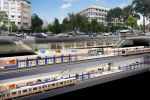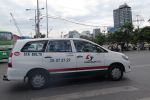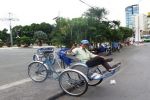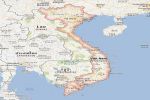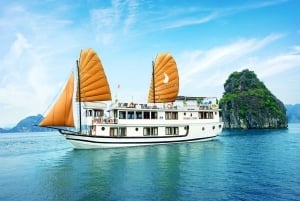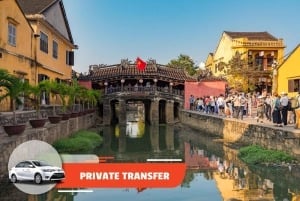Transportation
Below are the transportation options.
Taxis
This is the most popular method to get around the city, as the rates are so reasonable. Make sure to use Mai Linh or Vinasun, the legitimate and branded taxis that are metered for price, so you avoid any price issues. A typical 10 or so minute journey costs around 50,000 VND.
Another option, (only while in Ho Chi Minh City!) is to use the taxi service, Uber. For those of you who aren’t familiar with this globally-growing phenomenon, you download the Uber app, add your credit card information and basically “order” a driver. I say driver, because the cars are sleek and nice- not your regular taxi car. The service is very easy to use, as GPS tracking will help you enter your pickup location and destination, as well as track your whole ride- so you can watch your route. One of the nicest aspects of using Uber is that you don’t have to exchange any money between the driver, as the transaction is taken care of through your credit card and the app. It’s a very modernized, comfortable way to take a taxi, and maybe most surprisingly, it is very concurrent with typical taxi pricing in Vietnam! You hardly pay any extra for the premium service.
Of course, taxis are so ever-present in most places of the city here, so it usually isn’t necessary to take the little extra effort of getting out your Uber app. But it sure is a nice option!
Cyclo
This is the bicycle with a kind of cart to sit on, usually with an older Vietnamese man as a driver, which you will see around the city- especially around Ben Thanh market. It is a fun form of transport that is special to Saigon and it should cost from 40,000 to 100,000 VND per journey, or more if you are taking a tour with one of these guys. This is a popular activity for tourists, and it allows for a view of the most prominent locations in the city, at a relaxed pace, and with a guide who can explain extra details about each stop. A typical short ride can last around 15 minutes, while a tour can take up to four hours.
Motorbike taxis (xe om)
"Xe ôm," can be translated as "hug vehicle," which makes sense because it is a motorcycle “taxi” with one (typically older Vietnamese male) driver, and you sit on the back! This form of transportation may seem a little foreign to some at first, but it actually is one of the most efficient modes of transport within the city. Most of the drivers are very friendly, courteous, willing to take you wherever you want to go. They are generally a hard working bunch, and you may hear them call out to you to offer their motorbike service as you walk by. Then again, you may notice many of these drivers sprawled across their bike, taking a nap until someone taps them on their shoulder to ask for a ride! Drivers should have an extra helmet on hand for you, as they are mandatory in Vietnam. However, even with this precaution, you may wonder if it is safe to put your trust in a stranger motorbike driver?
Really, the drivers are so accustomed to the city roads and the traffic, that they have become very experienced/talented drivers, who still take each ride carefully. Worst case scenario, you can give it a try, and If you feel too frightened, you can simply stop the driver and hop off! The main benefit of taking a xe om instead of a taxi, is that you can get to your destination faster! You will notice that the taxis drive quite slow, and they give precedence on the road to the motorbikes, who weave around cars and get ahead more quickly. The prices are usually a bit cheaper than taxis too, with savings making a real difference on longer trips. Of course you want to keep in mind that a longer distance trip will include some highway driving which can be more nerve wracking and also a bit draining!
Train
Since Ho Chi Minh is the largest city in Vietnam, it serves as a main terminal for many train routes. The Thong Nhat express train connects Ho Chi Minh City and Hanoi, vie many provinces in Vietnam. The Reunification Express (Thá»ng Nhất) runs from Ho Chi Minh City to Hanoi from Saigon Railway Station in District 3. However, rail transportation is not fully developed and presently makes up for less than 1% passenger traffic.
Air
In Northern Vietnam, Hanoi holds the country’s second largest airport, Noi Bai. Other international airports in the Northern region include Cat Bi in Hai Phong province. Domestic airports in this region include Vinh Airport in Nghe An Province, Dien Bien Phu in Dien Bien Province and Na San Airport in Son La Province.
In Central Vietnam, the main airport is Da Nang, located on the Southern side of the major port city, Da Nang. Other international airports include Lien Khuong in Da Lat, Phu Bai in Hue and Cam Ranh in Nha Trang. Domestic airports in this region include Dong Hoi in Quang Binh, Pleiku in Gia Lai, Phu Cat in Quy Nhon and Dong Tac in Tuy Hoa.
In Southern Vietnam, Ho Chi Minh City’s main airport is Tan Son Nhat, which is 7km from the center of the city. This is the biggest airport in the country, with many domestic and international routes. Actually, this city has even bigger airport plans for the future: around 2025, another airport is planned to be based about 40 km Northeast of the city center, in Long Thanh District. Hypothetically, it will serve international flights and then Tan Son Nhat will be converted to only serve domestic flights.
Other international airports include Phu Quoc in Phu Quoc Island and Can Tho, in Can Tho province, in the Mekong Delta. Domestic airports in this region include Ca Mau in Ca Mau Province, Co Ong in Con Dao, Duong Dong in Phu Quoc, Rach Gia in Kien Giang and Vung Tau in Vung Tau City.
The best airlines in Vietnam include: Jetstar Airways, Vasco, VietJet Air and Vietnam Airlines.
Metro System
Currently there is no metro or subway system active in Vietnam- but it is under construction in the South! The Ho Chi Minh City Metro has projected production completion set for 2018. It will be a light rail rapid transit system that will connect Ben Thanh Market to Suoi Tien park in District 9 and will serve an expected 150,000-plus passengers daily. More lines are being discussed with the government to connect even more districts of the city, and this transport improvement will make the future of Ho Chi Minh City even more modern and convenient for its residents and visitors.
Unfortunately for some current businesses within the central area of District 1, the construction has complicated or completely shut off the traffic on some of the historically most popular streets of the downtown area! Specifically, large parts of Le Loi and Nguyen Hue are blocked off, which has decreased traffic to some of the businesses here, and conversely increased the motorbike traffic in other streets/areas of the city, as people have had to find new routes. This is the reality of city modernization and expansion, however, and these advances in progress are making it a very exciting time to be in Ho Chi Minh City, watching the transformation on the horizon.
Water Transportation
Vietnam has a huge amount of navigable rivers, and a ride along one of them is an essential part of any visitor’s itinerary. The most famous cruise is of course along Halong Bay in the North, or Tam Coc (lakes within caves) in the Ninh Binh province. In Central Vietnam, a peaceful ride to the Cham Islands from Hoi An makes for a special day trip. In the South, a trip through the Mekong Delta is another authentic river experience.
Ho Chi Minh City’s location on the Saigon River situates it perfectly for bustling economic action: it is a commercial and passenger port with a constant stream of cargo ships as well as passenger boats, including the newer, Hydrofoil speedboats, which operate regularly between Ho Chi Minh City and various destinations in Southern Vietnam, including Vung Tau, Can Tho and the Mekong Delta, and even Phnom Penh in Cambodia.
Coach Bus
There are a large number of companies including the prominent: Phuong Trang Bus Line, Mai Linh, and Hoa Mai, which run coach buses to and from many other areas in Vietnam. These companies run deluxe buses to destinations all along the Highway 1 between Hanoi and Ho Chi Minh City.
Public City Bus
Ho Chi Minh City may not have their subway system running yet, but for those who want to use the cheapest form of transportation, and experience transport in the city as the locals do, the public bus system is a great option. It is incredibly developed, clean, and actually quite easy to use. Over 100 different bus lines and routes connect the districts and tourist locations that are a bit far from the downtown city center, with a single ride fare starting at 3,000VND. Keep in mind though, that having to wait for the bus in the heat, and sometimes rain, can be exhausting, especially when you can get around more quickly on a xe om (motorbike taxi) or taxi. Taking the public bus may only be appealing to adventurous travellers, but you can always give it a try! We especially suggest to consider the bus for the popular tourist locations we’ve listed below.
In general, you can use the convenient location of the main bus stop hubs at Ben Thanh Market or also Cho Lon in District 5, if you happen to be over there. You can look at our list, and if you don’t see what you are looking for, check out the main Saigon Bus website, which has a Google Maps based guide which highlights the stops for each bus route.
Tan Son Nhat Airport: Those who are on a very tight budget can consider taking the bus to and from the airport, from Ben Thanh Market. It’s bus number 152.
Cu Chi Tunnels: Another very smart route to mention is bus number 13, which takes you to Cu Chi tunnels. Of course many tour company buses go to Cu Chi Tunnels, but it is a day trip that you can easily manage on your own. Cu Chi actually offers free tour guides on site, so it is very doable to simply take the public bus there and back, use a free guide to be shown around, and still have a comparable experience as an organized tour provides.
Suoi Tien Amusement Park: Bus number 19 is also a good bus to note, as it goes to the Suoi Tien Amusement Park! It leaves from Ben Thanh Market, and takes around 45 minutes to arrive at the stop for the park. This is about how long it would take by car anyway.
Dam Sen Water Park: This is also a popular tourist attraction- great for families, too! Bus number 11 goes directly from Ben Thanh Market to the water park in about 40 mins.
Distances from Ho Chi Minh City to Nearby Cities
Ho Chi Minh City is the main junction for trains, roads, water, and air transportation systems for domestic trips and for foreign destination.
To Hanoi: 1,730 km To Ho Tram: 125 km
To Tay Ninh: 99 km To Can Tho: 168 km
To Bien Hoa (Dong Nai): 30 km To Dalat: 308 km
To My Tho: 70 km To Buon Ma Thuot: 375 km
To Vung Tau: 130 km
National Highway 13 connects Vietnam with the rest of Indochina.


